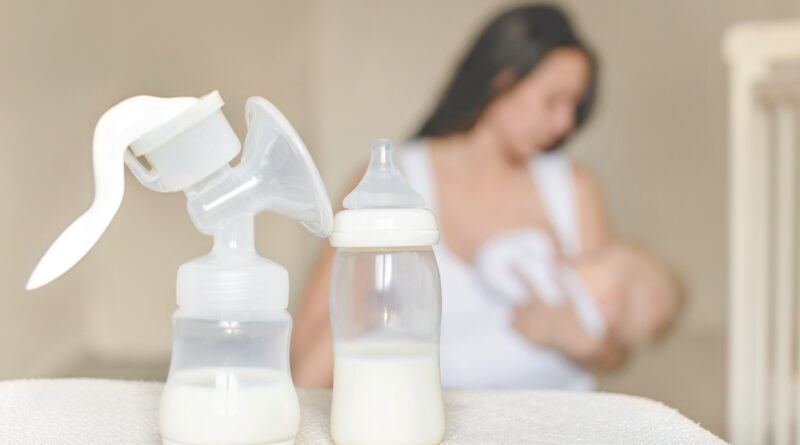Webinar: Guiding Families Through Breast Pump Coverage and Access: Policies, Process, and Providers
Navigating breast pump coverage through insurance can be a confusing and frustrating experience for new parents. The Affordable Care Act mandates that most health insurance plans cover breast pumps, but the process of obtaining one often requires persistence, paperwork, and support. The webinar below helps home visitors and other family-support staff understand the policies, procedures, and key players involved so they can assist families.
In this webinar — hosted by LA Best Babies Network on May 22, 2025, for Welcome Baby Hospital Liaisons and other staff of our network’s home visiting organizations and Welcome Baby hospitals — Alejandra De Leon, BSN, RN, IBCLC, discusses:
- Resources for Medi-Cal–contracted Durable Medical Equipment (DME) providers that supply breast pumps, ensuring timely and equitable access for families
- Distinctions in breast pump coverage under Medi-Cal Fee-for-Service (FFS) and Medi-Cal managed care plans
- How to equip staff with knowledge about the different types of breast pumps and how to guide families in selecting the option that best meets their individual needs
- Step-by-step guidance on how to obtain a breast pump through Medi-Cal, including verifying benefits, obtaining a prescription, and navigating the DME process
Most health insurance plans, including Medi-Cal and many state-regulated plans, cover the cost of a breast pump. Here’s what families need to know:
- Coverage is required: Insurance must cover a breast pump for each pregnancy, typically once every 36 months.
- No cost-sharing required: Many plans offer pumps with no copay or deductible, especially for basic models.
- Manual or electric pumps may be covered, but the type of pump available depends on the plan and DME (Durable Medical Equipment) provider.
- Price matters: Coverage generally applies to pumps that cost around $100 or less. If a parent wants a more expensive model or a specific brand, they may need to pay the difference.
- Prescription may be required: Especially for higher-end or hospital-grade pumps, a prescription from a healthcare provider is often needed.
- Timeline: It’s recommended that families start the ordering process by 30 weeks of pregnancy.
Fee-For-Service (FFS) versus Medi-Cal Managed Care Plans (MCPs):
- Fee-For-Service (FFS): Coverage for breast pump is typically covered on a per-service basis.
- How it works: The state pays providers directly for each service they deliver to a Medi-Cal beneficiary.
- Flexibility: Patients can see any provider who accepts Medi-Cal FFS.
- Process: Providers bill the state’s Department of Health Care Services (DHCS) for each individual service (breast pump).
- Less coordination: Patients manage their own care; there is no care coordination from a health plan.
- Medi-Cal Managed Care Plans (MCPs): Breast pump coverage may be streamlined, with designated suppliers and additional support services available.
- How it works: Medi-Cal contracts with private managed care plans (e.g., Health Net, LA Care, Blue Shield Promise) to provide care to enrollees.
- Network-based: Patients must get care from in-network providers approved by their MCP.
- Care coordination: MCPs offer case management, preventive care outreach, and integrated services.
- Payment model: The state pays the plan a fixed monthly amount per patient (capitation), and the plan pays the providers.
Many families don’t realize that they’re not limited to just one durable medical equipment (DME) provider when it comes to getting a breast pump through their insurance. Parents can compare DME providers to see which breast pumps are available through each one. Encouraging families to explore their options makes them feel informed, empowered, and supported — and helps them get the equipment that works best for them.
Watch the webinar recording here, and don’t miss the links to related resources below:
About the presenter:
Alejandra Santizo De Leon is a foreign-educated BSN and Dual Board-Certified Registered Nurse (Guatemala-California), as well as an International Board-Certified Lactation Consultant (IBCLC) with extensive experience in maternal-child nursing. In Guatemala, she worked as a midwife, staff educator, and vertical transmission HIV counselor-care coordinator. Upon moving to the United States, she continued to focus on maternal-child care, initially working as an in-home visitation Welcome Baby Registered Nurse for Antelope Valley Partners for Health. This role introduced her to the International Board Certified Lactation Consultant (IBCLC) pathway, which deeply resonated with her. Since then, she has dedicated herself to assisting families on their feeding journeys, gaining experience in a Level III NICU (five years), outpatient settings (four years), and hospital intrapartum and immediate postpartum units (two years).
Related Resources:
- Presentation slides for this webinar (available here soon)
- DME Breast Pump Providers (guide available here soon):
- Breast Pump Comparison Guide
- Cherry Blossom Family Program
- Using DATA to Compare Breast Pumps (video)

